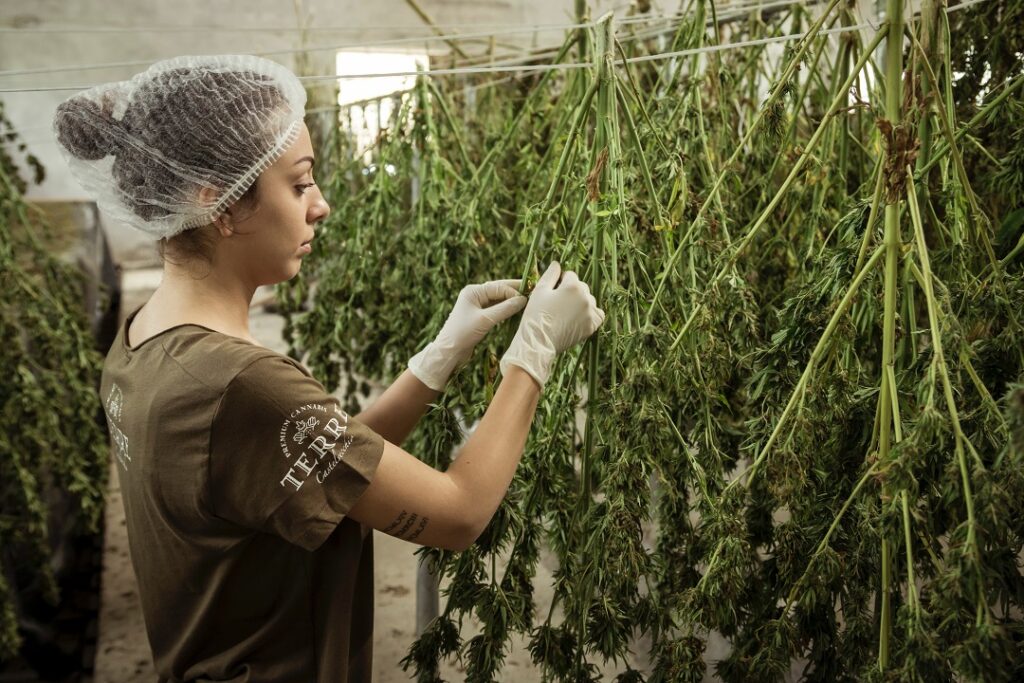First e-cigarettes, then drugs? The results of a study from the USA show that many young people with a preference for e-cigarettes also turn to other addictive substances.
There is a sweet scent in the air. Fruity flavors seem to be particularly popular with young people who also consume cannabis. This is one of the findings of a study on the consumption of e-cigarettes among young adults in the USA. The study investigated the question of how the consumption of e-cigarettes is developing. Is it increasing or decreasing? And what about the consumption of other drugs?
Rapid trend in the consumption of e-cigarettes
To find answers to these questions, study director Dong-Chul Seo and his team analyzed data from a representative longitudinal study. Between 2013 and 2019, over 5,000 young people between the ages of 18 and 24 were surveyed several times. At intervals of around one year, they provided information on their consumption of e-cigarettes and other drugs five times. This allowed the research team to investigate how consumption behavior changes among individuals and what trends can be identified.
What became clear: More and more young people were using e-cigarettes regularly. While 4 percent of participants stated that they regularly smoked e-cigarettes at the start of the study, six years later this figure had risen to more than 9 percent.
The progression was interesting. Between the first four surveys, there was only a slight increase in the proportion of e-cigarette users among young people. The strongest increase occurred between the last two survey dates, i.e. between 2018 and 2019. In the same period, people who use e-cigarettes have significantly increased their consumption compared to previous surveys. In turn, fewer young people smoked conventional cigarettes.
The research team can only speculate about the reasons behind this. It assumes that new disposable products have contributed to the popularity of e-cigarettes. The addictive potential of e-cigarettes may also have increased because new products with a higher dosage of the active ingredient nicotine have come onto the market.
E-cigarettes and other drugs
Another trend concerned the consumption of other drugs. Participants who increased their e-cigarette use over the course of the study were more likely to use cannabis and binge drink more often compared to their peers. They also used illegal drugs such as cocaine or speed more frequently than other young people.
Another interesting result is related to aromatization. Young people with a preference for sweet and fruity flavors smoked cigarettes and cannabis more often than people who preferred menthol or mint flavors in their e-cigarette.
Common risk factors lead to drug use
Does this mean that e-cigarettes lead to the consumption of other drugs? Probably not, as the study does not provide any data that would allow any conclusions to be drawn about cause-effect relationships. The research team suspects that the principle of common risk factors is behind this connection.
According to this model, there are risk factors that generally encourage people to consume intoxicants. Such risk factors could be, for example, a genetic predisposition or differences in personality. Accordingly, it is not the e-cigarette that is responsible for people consuming other drugs. Rather, these people are burdened by certain risk factors. This results in a general tendency to use psychoactive substances. Another result of the study fits in with this, according to which people with increasing consumption of e-cigarettes also have more frequent psychological problems.
Regardless of the question of cause and effect, however, the study makes one thing clear: for people who use e-cigarettes and increase their consumption over time, this could be a warning sign that they are generally more susceptible to the consumption of addictive substances.





